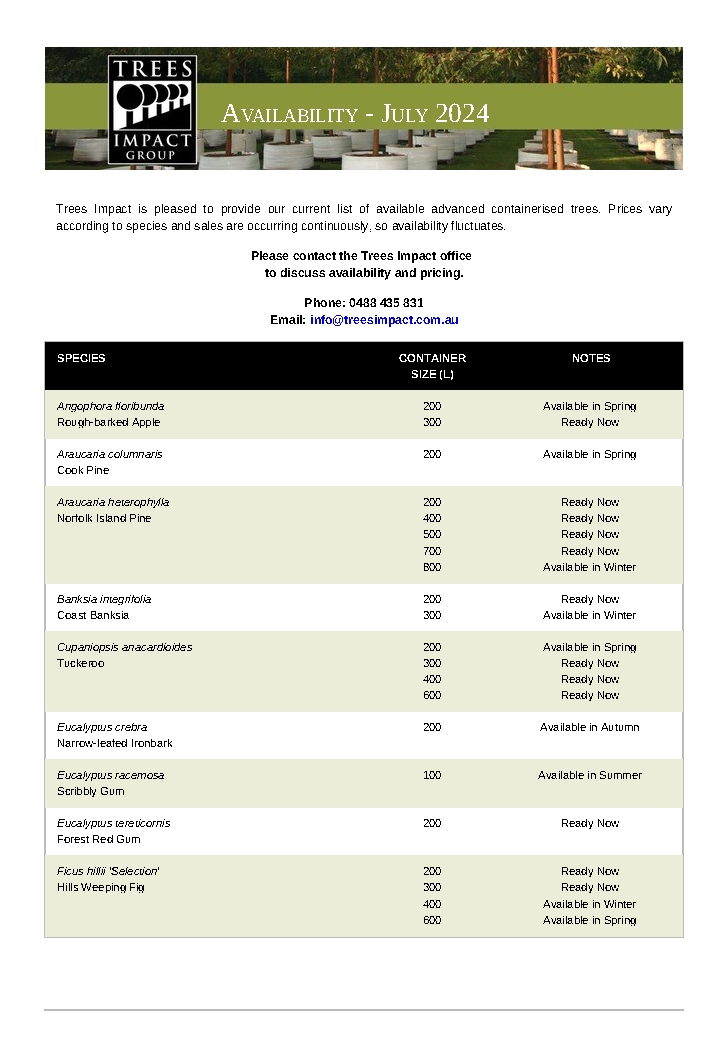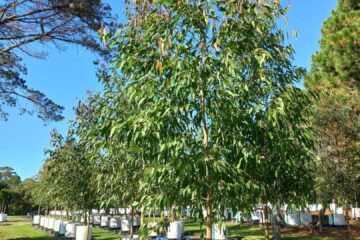Not dead – just disappointing
At Trees Impact we persistently push the ‘quality’ message. (eg see Why Buy Only the Best Trees Available). But preach as much as we like, decision-makers actually need to see what we are talking about to appreciate that message. So…
HERE ARE SOME PICTURES WORTH A THOUSAND WORDS…
This subdivision was originally planted about eight years ago with Tuckeroos at quite advanced sizes (estimated to be 300 litres). Some have since died and been removed. Some survivors look reasonable, others lack foliage and vigour – but not one has grown into a handsome,stable tree.
What we have today is a streetscape that is very disappointing, with trees that will never achieve the designer’s expectations. When you also consider that this site has good soil and high rainfall, the poor outcome is doubly disappointing. And this is not a ‘one off’. It is to be seen time and time again.
“Original Tree 1” shows a tree that is alive, probably smaller than it was when originally planted, with a very sparse crown and poor vigour.
“Original Tree 2” shows a tree that appears to be in better condition. However, much of this denser, more vigorous foliage is the result of and supported by sucker growth – not the original trunk.
“Original Tree 3” Shows a tree a small clump of healthy foliage occurring on the unbalanced remains of the crown following considerable dieback.
This excellent “Replacement Tree” is a Trees Impact Tuckeroo – planted at a 200 litre size and given a reasonable but not excessive amount of watering during its establishment just two years ago. It was planted as replacement for a very poor original specimen (similar to the others in the same street).
It should come as no surprise to learn that when the original tree was removed its root system was found to be seriously girdled (see Its All in the Roots ). While all trees may have presented well at planting, their significant root defects meant that the whole planting was doomed to always look sad. What a disappointing waste of money and opportunity.
Imagine how well established this streetscape would now be if all trees had been planted at a Trees Impact (NATSPEC) standard eight or nine years ago.

